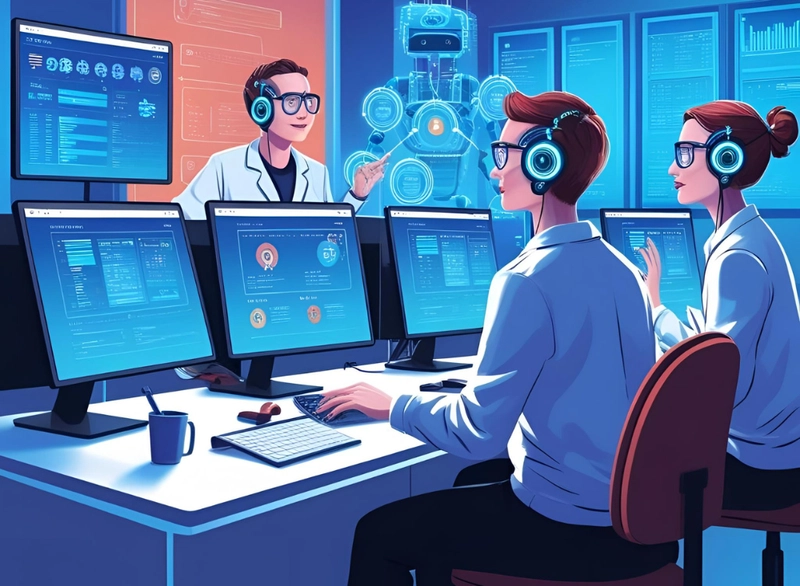As software systems become increasingly complex and user interactions grow more dynamic, traditional manual testing and scripted automation are beginning to hit their limits. Enter synthetic testers — AI-driven agents designed to mimic the behavior, thinking patterns, and decision-making processes of human testers.
Synthetic testers are not just automation scripts. They are intelligent entities capable of exploratory testing, learning from application behavior, adapting to changes, and executing tests in real-world-like conditions. This paradigm shift is revolutionizing how quality assurance teams approach software validation in 2025.
What Are Synthetic Testers?
Synthetic testers are AI-powered agents trained to simulate how a human tester would interact with an application. Unlike rule-based bots or pre-scripted test automation, synthetic testers:
Understand user interfaces and context
Make decisions based on experience or learned behavior
Generate, execute, and adapt test scenarios autonomously
Identify edge cases through unscripted exploration
In essence, they combine the analytical power of AI with the intuition of a human tester.
Key Capabilities of Synthetic Testers
Exploratory Testing
Synthetic testers can autonomously explore applications to discover potential failures that weren’t anticipated during test planning. They follow different user paths, trigger boundary conditions, and uncover hidden defects — without human intervention.
Adaptive Learning
These agents leverage machine learning to understand app behavior over time. As the software evolves, synthetic testers evolve with it, adjusting test cases based on UI/UX changes or new workflows.
Natural Interaction Simulation
Synthetic testers can simulate real human inputs like touch gestures, voice commands, and keyboard/mouse behavior — across web, mobile, and voice interfaces — making them ideal for end-user experience validation.
Test Prioritization and Optimization
AI agents analyze risk areas, code coverage, and historical defect data to prioritize what to test. This reduces test execution time while maximizing coverage.
Continuous and Autonomous Testing
Synthetic testers operate continuously, testing builds as they arrive, even during off-hours. They don’t rely on rigid test scripts, making them more resilient to changes in the application.
Benefits of Using Synthetic Testers
Accelerated QA Cycles: No need to write or maintain extensive test scripts. Synthetic agents adapt instantly to changes.
Increased Coverage: AI testers explore deeper user flows, edge cases, and interactions often missed by manual testers.
Higher Test Resilience: Unlike brittle test automation, synthetic testers adapt to UI changes without breaking.
Lower Maintenance Overhead: With continuous learning and self-healing capabilities, maintenance becomes minimal.
Real-World Simulation: Synthetic testers mimic realistic human behavior, improving the relevance of testing outcomes.
Use Cases Across the SDLC
Agile and DevOps: Fit seamlessly into CI/CD pipelines to provide early, ongoing feedback with every code change.
UI/UX Validation: Test design consistency, accessibility, and interaction patterns as a real user would.
Regression Testing: Conduct wide-reaching regression tests without building or updating test cases manually.
Smoke and Sanity Testing: Quickly verify application health with human-like test agents after each deployment.
The Future: Autonomous Testing Workforce
The rise of synthetic testers signals a move toward an autonomous testing workforce — where AI agents independently design, execute, and analyze tests. Human testers won’t disappear; instead, their role will shift to:
Guiding AI agents with high-level goals
Analyzing complex failures or ambiguous results
Focusing on strategic, domain-specific test scenarios
This hybrid approach — human creativity plus AI scalability — will become the new norm in software quality assurance.
Conclusion
Synthetic testers represent a breakthrough in how we approach software testing in the age of rapid development, AI, and multi-platform applications. By simulating human intuition and learning from systems dynamically, these AI agents bring scalability, efficiency, and intelligence to the testing process.
In 2025 and beyond, synthetic testers won’t just be an add-on — they’ll be central to delivering faster, smarter, and more reliable software.

